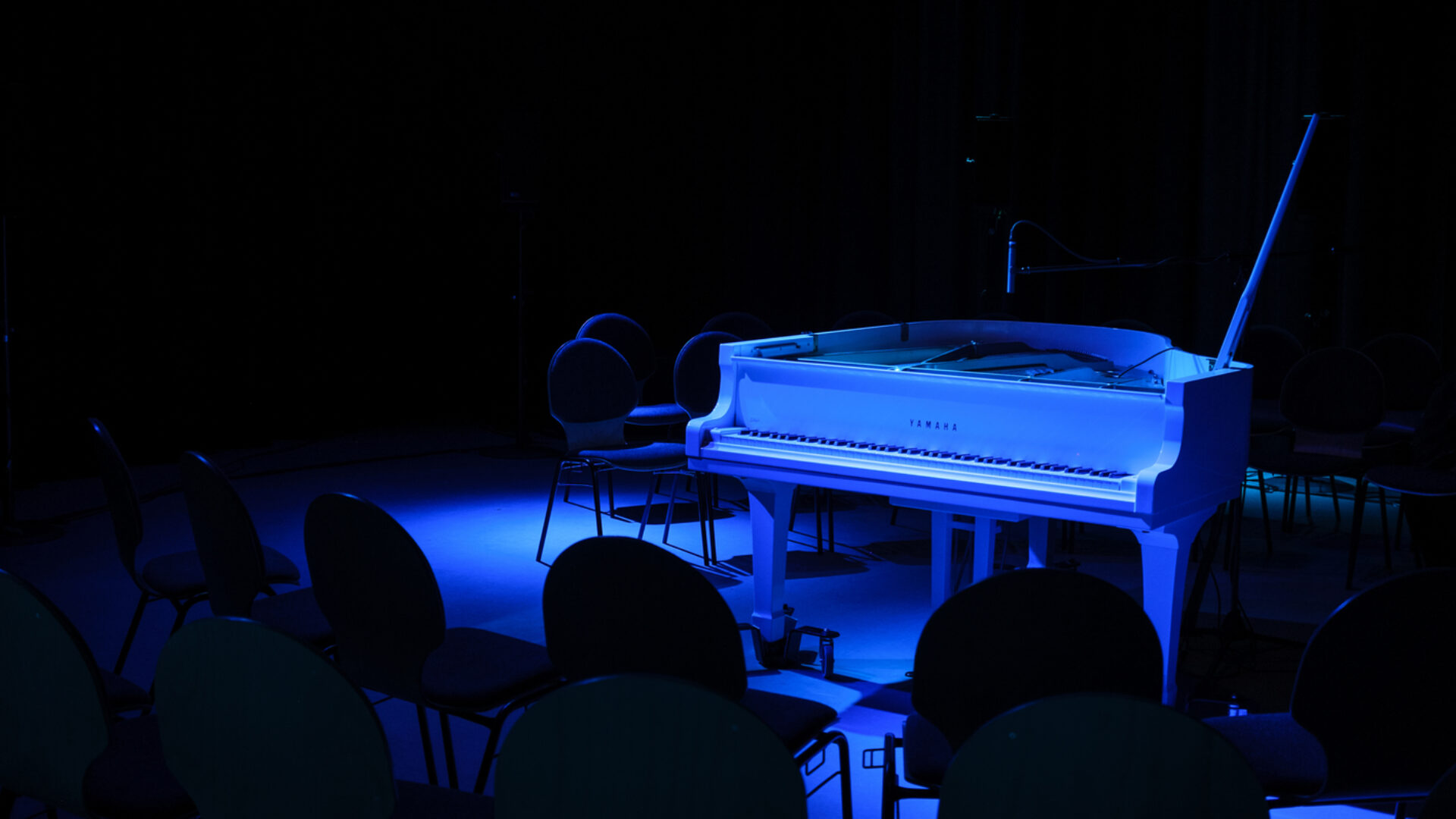These are the five proposed root snippets of the first development period. Review them carefully and assign them preference points by filling the form. Leave your own snippet the grade 0.
comment: I tried, as much as I could to embrace the pluralism of our different voices. The piece starts with a modification of my first proposal (according to some overall noise based patterns that I notices in sketches of other composers). This noisy ‘leitmotiv’ is juxtaposed with unrelated material by other composers, but it keeps reoccuring. The anamorphosis/departing from a common point is present in both the twisted proportions of subsections, as well es in gradual modifications of the initial ‘leitmotivish’ sound. My goal was (but really in this short time we had impossible) to start with presenting at least one material from each composer, then shortening these bits up and slowly starting to fuse elements together. I am sorry to say that I have only managed to finish the ‘exposition’ part of my idea. What I have noticed in our sketches is the overall tendency of either writing very dark or very light sonorities, so I profited from that fact in constructing the overall dramaturgy of this excerpt.
comment: In this snippet I am referring to the concept of “reforming, deforming (ir)-regularities, and I particularly am elaborating on one excerpt from the incubation phase, the Mechanic deformation of rhythmic regularities and the notion of Morphing. The snippet deals with percussive rhythmicities with regular relationships among the instruments. These can be perceived as blocks. What is important is the duration of the pause between them. Both the character of the percussive blocks, their content, their complexity, and duration, but also the duration of the pauses between them can be subject to elaboration in further continuations. The presence of the double bass, in orchestration with the super ball mallet, can also open a new territory of experimentation, literally diving into the low frequencies and exploring low-frequency glissandos with subtle percussive nuances in the d bass. Finally, my snippet is ending with the notion of granular morphing as an extension of the percussive regularities. In the same way, in measures 10-12, someone may elaborate on the duration of the scrapings and the duration of the high-frequency cressendi on the violin. What is important is the relationship between the hissing – on the bridge sound, on the cello – and the granular, scraping attacks on the metallic plate.
comment: Starting the piece with airy, light flautando, breathy, ghost like moving layers. In percussion, by using the bass drum, super ball, and just rolling with very soft mallet, the sighs and pianissimo creams in flexatone, and in cymbal. These all creates a mysterious opening, and also a welcome to develop this to a further material, possibility an explosion which can also result to a Strat of a completely different section, for example a very secco rhythmical part (could also be tutti) with adding those tiny chimes attacks (which could be wooden, seed rattles, metal or glass). We can add some other colors to this windy atmosphere that we are creating. The use of brush on the surface of bass drum could also happen here. This excerpt is over 1 minute because it needs to be. This kind of material with its combination has to own its space, in order to let us follow the energy of the sounds. Other kind of sounds that can also work here , would be any other ways of creating “same “ timbral exploration, such as bow on the body of the instrument, or on the bridge. We cane explore various kinds of airy, ghost like sounds.
comment: This excerpt follows the material presented in “granular morphing”. The present excerpt displays a slow, granular texture that moves between the different instruments of the ensemble. The texture is statical, not gestural and it presents a kaleidoscopic noise between the different instruments. It could have two possible developments. 1. The different interventions of the different instruments synchronize together in a granular common noise. From this sync moment, the noise can be developed again into another transformation 2. As it is suggested in the last bar in the part of the cello, the noise texture becomes trills. Harmonics take the reference of the high frequencies of the granular noise, and from it, a texture of trills of harmonics develops -like in the sketch ” transformation from noise to trills”. The granular noise could appear again in another transformation. A possible overall structure would be a sound material in constant change, that moves from one transformation to another. The overall form is not a development from A to B, but rather a set of limited transformations that always appear in different variations.
comment: This fragment (intended as a beginning) starts with “Becoming Butterfly” (Incubation 3) and proceeds to two processes of deviation: the pulse of the Cello changes in a controlled and gradual manner into the ostinato pattern of the snare drum found in “deforming verticalities: (ir)regularities” (Incubation 4) , but faster. The bass, on the other hand, deviates into a semi-improvisatory behavior (explored in the concept of “Ecstatic improvisation” (Incubation 5)) and in the percussion pattern of “Pulsating flutter” (Incubation 3), which is it’s arrival point (mistranslated into contrabass idiom and notated in double rhythmical value). The final measure is open, and involves only two instruments, so that there is space to easily arrive at any of the mentioned sketches.
